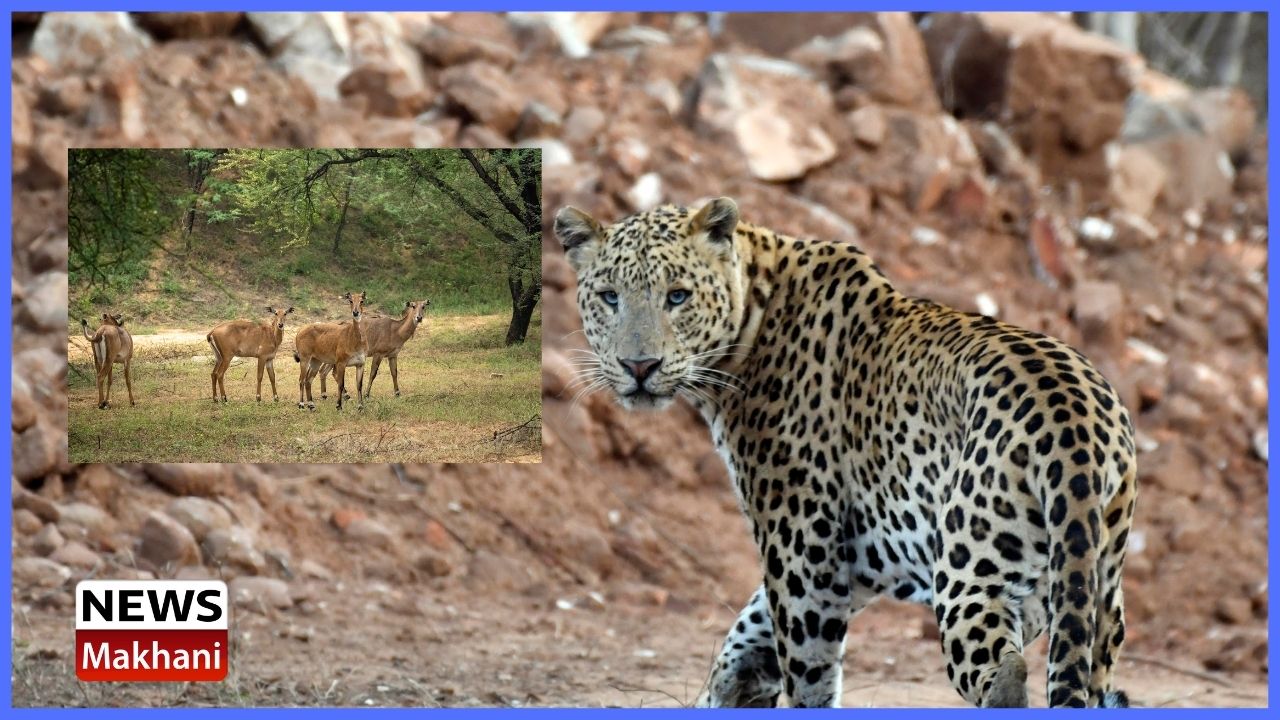Jaipur, May 22. Amagarh, the reserved forest section in the Aravali mountain ranges, is spread over 1524 hectares. It is situated in the east of Jaipur city. The State’s first leopard reserve is in the middle of Jhalana and Nahargarh sanctuary which is very important from the point of view of the forest, wildlife conservation and corridor development. Lalberi reserved forest section is adjoining the Amagarh forest section, which is spread on 112 hectares. The total area of both forest sections is 1636 hectares and its periphery is around 28.6 kilometres. The main wildlife here is the leopard.
Around 15 leopards are in Amagarh
There are around 15 leopards in this forest area. Besides this other wildlife found here are hyenas, jackals, wild cats, foxes and civet cats in the carnivorous category while in the herbivorous category blue bulls (Nilgai), Asian Deer (Sambhar), rabbits etc. The forest area is a tropical, mixed/autumn/monsoon area where the vegetation on the mainly sandy plain area is totlis, kumtha, khejari along with dhonk, salar, goya khair etc on the mountain slopes.
250 kinds of Bird Species
Around 250 kinds of bird species including local and migratory birds are found here. Local birds include peacocks, partridges, doves, babblers, mynas, parakeets, robins, woodpeckers, bulbuls, shikra etc, whereas the migratory birds include pittas, paradise flycatchers, golden orioles, pied cuckoos, Eurasian cuckoos, orient scops owls, pallid scops owls, northern goshawks, Eurasian sparrowhawks etc which come from various parts of the country and world for breeding and in search of food.
6 Water Points in Reserve
The main works done for leopard conservation by the department are the construction of 4 new water points, renovation of 2 old water points, digging 2 new bore wells and installation of solar panels on them and arrangement of drinking water for the wildlife through pipelines to these water points.
Online booking for convenience of tourists
The safaris in this area will be organised in two shifts in the morning and in the evening. To avoid overcrowding and to regulate tourism, only a limited number of vehicles will be allowed in each shift. Safari tickets will be available online for the convenience of tourists and bookings can be made on the website https://sso.rajasthan.gov.in. The ticket window and the entry gate for Amagarh Leopard Safari is situated just beyond Sisodia Rani ka Bagh on the road leading to the famous Galta temple.
Several forts & temples
Apart from enjoying the drive through the enchanting forest and clicking pictures of leopard, hyena, desert fox and other birds and animals during the drive, tourists can also enjoy some scenic views around the area. There are several forts and temples inside the area like Galta temple, Amagarh fort, Raghunath fort and Amabamata temple.
Need for Leopard Conservation Work
The department made efforts in the field of wildlife conservation under the Project Leopard, as the result after 2017 the number of leopards is increasing at Jhalana Leopard Reserve. The number of leopards in 2018 was around 20, which currently is around 40. In the last three years (January 2019 to August 2021) a total of 35 cubs were born. Amagarh forest area is being used as a corridor by leopards and other wildlife to go to other jungles. The jungles of Jhalana are spread over 1978 hectares only, which is limited space for leopards therefore sub-adult leopards in search of habitat are moving towards Amagarh and Lalberi forest areas and in future too, they will keep moving to these areas. In this way, the number of leopards will increase.
READ MORE :- District Collectors directed to open fodder depots & supply water through tankers
———

 English
English
